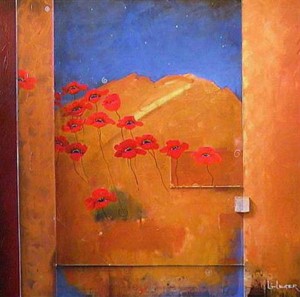Considering the growth rate in the fine art digital printing field, the world is experiencing a personal creative renaissance these days. One recent study reported a compound annual growth rate of 20% for large-format digital printing and the rest of the fine art printing industry is also expanding exponentially. Everyone seems to have a creative idea that they want to see expressed.
Chromalink – a boutique firm based in Vancouver that specialises in colour management solutions – partners with many fine art commercial printers and individual creative people to ensure that their colourful creations are accurately represented in the final print. More people may be seeing the world through rose-coloured glasses but if that rose colour comes out as hot pink then it’s a totally different world. Chromalink helps to ensure the quality, accuracy and consistency of the colours in every fine art print.
The fine art printing field was once of limited scope and it was hard to attach the term “fine art” to the printed material. It took a rock star to give the industry a needed jolt. In the late 1980s, Graham Nash (who was part of the famed foursome Crosby, Stills, Nash and Neil Young) was experimenting with digitally-altered photographs but the ability to see, scan and print his artistry remained crude. Nash was instrumental in introducing the IRIS printer – the first high-caliber fine art printing platform – to a wider audience. Nash Editions also popularized the term “giclee” to give the new medium some French je ne sais quoi (it translates as “to spray”). By 1990 digital fine art was beginning to make its mark but the medium was unrefined and expensive – the first IRIS printer cost Nash $126,000.
Digital fine art printing has come a great distance since then, both technologically and creatively. There is now a lot of complexity and experimentation as artists explore the diverse visual experiences available with digital art. The field includes everything from museum-quality fine art photographs blown-up as large as billboards to archival giclee reproductions on colour-soaked canvas to exhibition-quality examples of iPhoneagraphy, a popular new medium born of the fidgety fingers of people with an iPhone camera. And artists are taking creative advantage of the many different substrates available from fine art rag paper to satin-coated canvas to dibond and metallic papers.
Having already earned a reputation for providing creative resources to local artists, Chromalink’s client Opus Art Supplies has recently expanded their custom digital printing service to all 6 retail locations. Opus’ trained digital art technicians such as Trevor Code at their downtown store know how important it is to achieve the correct colours when moving from screen to print. Digital reproductions of existing artwork come with certain colour expectations that only a properly colour-managed system can provide.
To ensure colour consistency, Chromalink regularly calibrates the monitors and printers in all of Opus’ locations. Chromalink also provides ICC profiles for each of the material substrates so that no matter the material, the printed colours will be as near to the original as is technically possible. “Chromalink’s colour management service ensures that the colours we print are accurate, consistent and repeatable”, Code says. “Artists expect creative perfection and that’s what we strive to give them”.
Haris Hasimbegovic, Chromalink’s colour management consultant, intimately understands the challenge of printing colour perfectly. As he explains, “Printing art is a craft and I think of Trevor and his colleagues at Opus as skilled artisans. And most are artists themselves which helps in how they see and develop the digital files. With colour, the details matter to achieving a high quality fine art print”. By giving artists the certainty to work with digital colours more confidently, Chromalink and Opus open up the possibilities of what a fine art print can be.
These days every artist should know how to control and print digital colour. To help artists navigate this complex world, Chromalink will be hosting a full-day workshop on the challenges, intricacies and opportunities of working with colour in a digital media environment. Using the state-of-the-art media facilities at the Vancouver Film School, Chromalink will clearly explain how to manage the colour workflow moving from raw input files to perfect prints. Intended for digital media artists and both hobby and professional photographers, the workshop will provide hands-on and practical examples of how to control colour moving across multiple platforms and using different material substrates. Whether explaining monitor calibration and profiling or how to correctly use the colour settings in Photoshop, Chromalink’s workshops use plain language and helpful hints to better understand how to print at a master level.
Pre-register for our upcoming workshop on Digital Fine Art Prints and Colour Management.
